Peonies "Monsieur Jules Elie": description of the variety and cultivation features
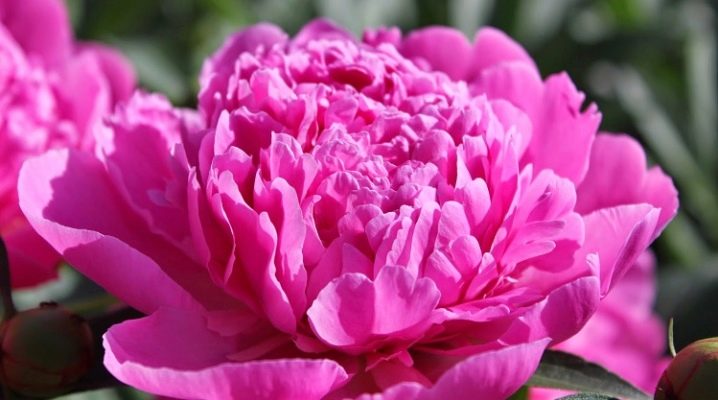
Even before the advent of our era, China began to cultivate elegant spring flowers with bright large buds, worthy of blooming only in the imperial gardens. These were everyone's favorite peonies, the varietal variety of which is amazing. Among all this splendor, a peony of the "Monsieur Jules Elie" variety occupies a worthy place.

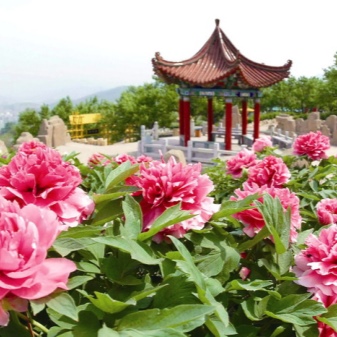
Description of the variety
Peonies are one of a kind perennials. The area of their growth covers the entire subtropical belt and temperate latitudes. A fairly unpretentious plant is found in almost every garden. The variety "Monsieur Jules Elie" refers to herbaceous plants. It is a bush 0.9-1 m high, formed from erect, weakly branched stems with dark green carved leaves of medium size.

The decoration of the bush is large, up to 18 cm in diameter, flowers of a delicate pink color with a lilac tint and a silvery shine along the edge of the petals. The calyx of regular concave lower leaves is densely filled with thin petals, forming a large ball. When the bud is fully opened, it looks like it is doused with milk, for which the variety belongs to the milky-flowered species.
The history of the creation of "Monsieur Jules Elie" goes back to the end of the nineties of the XIX century. For more than 130 years, this mid-flowering peony has been pleasing its owners with beauty and unpretentiousness.
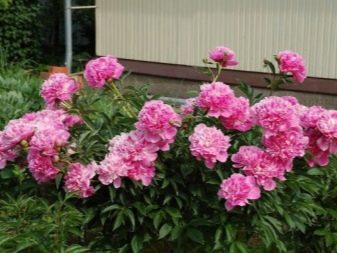
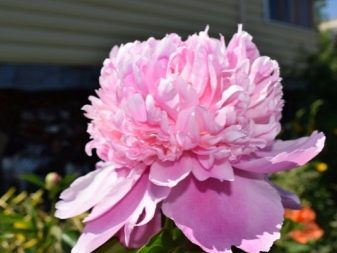
Care features
Like all peony, Monsieur Jules Elie loves sunny locations and neutral loamy soils. A plant growing in partial shade will also feel good, gaining green mass, but it will not please with beautiful flowering.
Water the plants abundantly, preventing water from stagnating. In the spring, when rapid growth begins, during the formation of buds and the flowering period, as well as at the end of summer, when new buds are laid, peonies need watering. One adult plant requires up to three buckets of water.
Watering the bush is carried out at the root, avoiding contact with the leaves. This amount of moisture is necessary for the water to reach the root system. After watering, loosening and weeding are carried out.
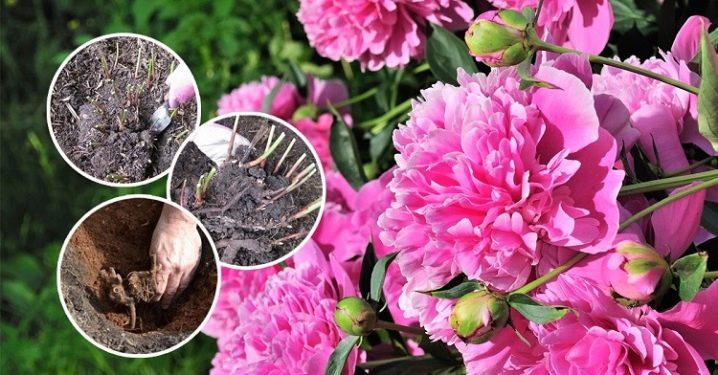
In the spring, after the snow melts, the soil near the bush is disinfected solution of potassium permanganate (2-3 g of substance per 10 l of water). One bush needs 5 liters of solution. With the onset of growth, the peony is fed with fertilizers containing ammonium nitrate. Once a month, the bushes are watered over the foliage with a solution any full mineral fertilizer (according to the instructions). Laundry soap is added to the water to make the solution stick to the leaves. Alternatively, you can use dry fertilizer by embedding it in a groove around the bush and then watering it.
Autumn comes the time for pruning and transplanting peony bushes, preparing the plant for winter. This does not present any particular difficulties, since Monsieur Jules Elie winters in the open ground, requiring no additional shelter, except for winters, when severe frosts and small snow cover are expected. However, young plants should be covered during any expected winter.
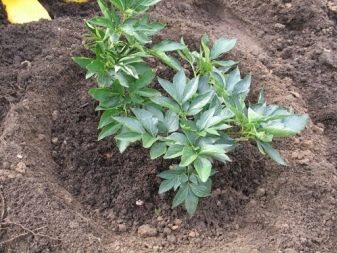
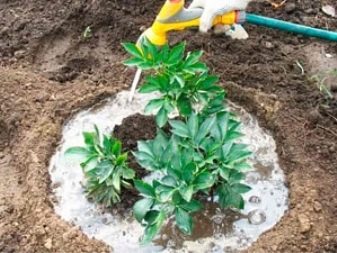
When the leaves and stems of the plant wilt, they are pruned at soil level. All dried tops are burned to prevent the development of diseases and pests. Harmful insects can hide in leaf axils. The treated bush is sprinkled with several handfuls of wood ash.
There are times when peony bushes need to be cut ahead of time. To avoid the death of the plant, the stems are cut so that 3-4 leaves remain on them. This method will allow the plant to lay new buds for the next year.
If the bush is cut completely before the deadline, then the peony may die.
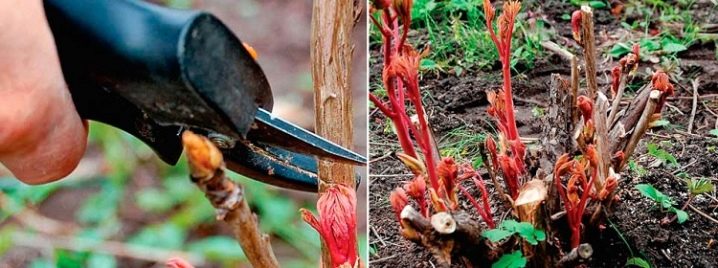
Transplant and reproduction
Wild peonies in one place grow up to 100 years, but their cultural counterparts require a transplant every 10 years.
When a plant needs to be transplanted or it is necessary to divide a bush, then it is carefully dug out, avoiding mechanical damage to the roots. The root system of peonies is powerful, with a fragile fleshy rhizome with tuberous thickenings. The root lies quite deep for herbaceous plants, so it must be dug out with a pitchfork. Having dug in the bush in a circle to a sufficient depth, gently pry it with a shovel and remove it from the soil.
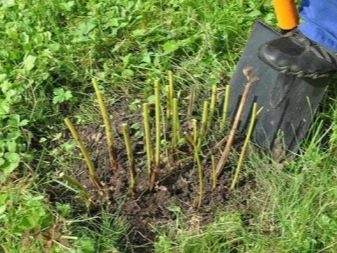
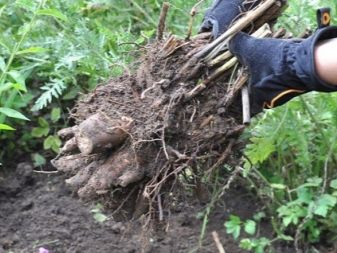
The removed root is shaken off the ground, washed and placed in the shade, allowing it to wither slightly to get rid of excessive fragility. Old thick roots are cut off at an angle of 45 °, leaving only 10-15 cm in length. Large rhizomes must be divided. To do this, use a peg, which is driven into the middle of the root, after which several parts with eyes are obtained. The division of roots is carried out for plants at least 5-6 years old.
Often the middle of the rhizome of peonies is empty, therefore every new part must be carefully inspected, rotten and damaged places must be removed... Treat the sections with a solution of potassium permanganate and sprinkle with fungicide.
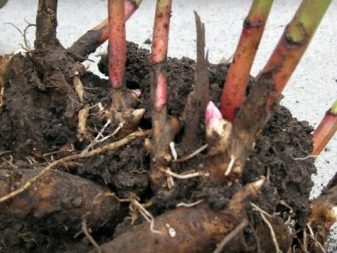

For planting, parts of the root are selected that have at least three eyes and several roots. Very large cuttings after planting get sick for a long time, and too small ones can die.
The planting hole is prepared a month before the start of autumn work. In a prepared hole about 60 cm deep, 2/3 is covered with a substrate from a mixture of earth, peat, humus and sand, adding wood ash, superphosphate and a little copper sulfate. Landing is carried out in a prepared hole so that so that the kidneys are located at a depth of 3-5 cm. From above, the cut is covered with earth and mulched with a layer of peat no more than 5 cm.
Peonies are propagated by dividing the bush and seeds... But due to the fact that it is difficult to obtain the original variety from seeds, this method is used only by breeders to create new plant species. The rest use the division of the bush.
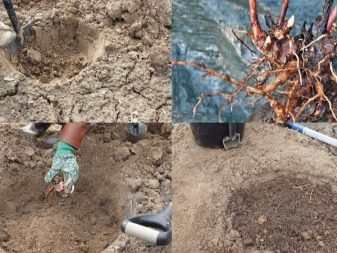
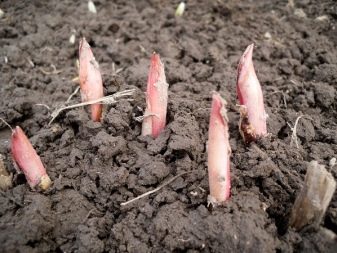
Peonies from divisions bloom in the second or third year, but varietal signs in them can appear only after four or five years with proper care:
- all buds on a one-year-old seedling are completely removed;
- in the second year, one bud is left, waiting for its flowering in order to see the presence of varietal characteristics, after which it is also removed, cutting it as short as possible;
- such an operation is carried out all subsequent years, waiting for the plant to bloom with the required color.
When this happens, you will never regret the effort and the long wait for the result.
For information on how to plant peonies correctly in autumn and spring, see the next video.







































































































The comment was sent successfully.